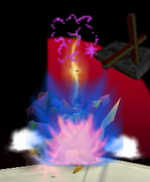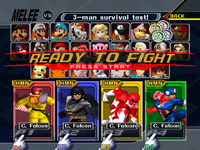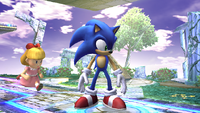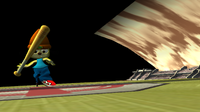File replacement
File replacement is a general term used to describe replacing various elements of the games in the Super Smash Bros. series, including textures, music, and even movesets. Super Smash Bros. Brawl is by far the most popular game in the series to hack, followed by Melee and then the original Super Smash Bros.. Hacker Phantom Wings is credited to expanding its popularity, as he made file replacement available to users using SD cards, as initially music and textures required ISO hacking. Notable texture hack programs include BrawlBox and Open SA.
In Smash 64
File replacement in Smash 64 is accomplished by the use of the Rice Video plugin in conjunction with an emulator. The lesser fanbase of Smash 64 is the primary reason why this type of file replacement is less common than for the other two games; additionally, Rice Video, when used with some emulators like Project 64, have reportedly caused stability problems with Super Smash Bros.
Owing to an inability to design cartridges for the Nintendo 64, no effective way has been found to replace files and use the modified ROM on an actual console.
In Melee
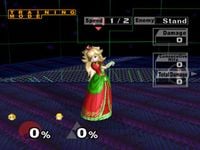
Largely untouched for the first nine years since the game's release, file replacement in Melee gained popularity when S. of Stack Smash posted his texture hacks online. This process entails replacing files directly to the ISO with a program such as GC-Tool, and then burning the ISO to a disc or saving the ISO on a computer so that it can be run with an emulator such as Dolphin.
Due to the difficulty in hacking the GameCube console by itself, the difficulty in reliably accessing the Wii's RAM for playing GameCube games, and the steep system requirements of Dolphin, file replacement in Melee is considerably less widespread than that for Brawl, though it does have a few devoted developers.
In Brawl
Due to the ease of hacking the Wii through the use of the Homebrew Channel, the lack of technical expertise in getting the Homebrew Channel and replacement files, the ability to hack a Wii because of an exploit built into Brawl itself, and a wide variety of resources available for it, file replacement is the most popular in the Brawl community, with many websites available solely for downloading a variety of hacks for the game.
Textures
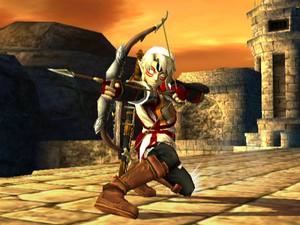
- For a catalog of many available texture hacks, please visit Brawl Vault.
The term "texture hack" refers to a hack that alters or replaces the designs or colors of a stage, texture, item, etc. The hacking of character palette swaps was pioneered by Pharrox, a user on Smash World Forums.
Since then, texture hacking has expanded to incorporate stage textures, item textures, Final Smash textures (e.g., the artwork seen during Peach's Peach Blossom), and non-playable character textures. Over time, the popularity of texture hacking has caused several other kinds of hacks to become available, such as music hacks, moveset hacks, and, eventually, model swapping, vertex hacks, custom animations, and even the insertion of completely new models.
Initially, blank DVDs were necessary in order to use texture hacks, but Phantom Wings managed to create a hack, exploiting Brawl's use of data created and saved on an SD card, that allowed for texture hacks to be stored on and loaded from folders on SD cards, making them much more popular and accessible. Now, the only thing required is an SD card, and a program to load the codes and textures, commonly Gecko OS or Riivolution.
Primary texture hacking teams
Possibly one of the most well-known and renowned hacking teams, ]Syntax Error[, the first texture hacking team, as well as the ones who released a guide to the masses on how to do texture hacking, was, unfortunately, broken up by their host site shortly after their releases for fear of a lawsuit from Nintendo. In reality, no lawsuit actually ever existed; it was only a safety precaution by the host site when they learned that ]Syntax Error[ had actually released their textures and guide to the public. Their host site believed that this release of hacks was a promotion of illegal piracy, when, in fact, Syntax Error did not promote piracy at all and actually refused to give out Brawl's ISO for the hacks, which could also be inadvertently used for piracy. Their textures, which had been released for a very short time prior to their being shut down, were given to the Stack Smash team, who placed them in a separate file on their [Index of /STUFFZ/]. Their being broken up by their host site for fear of legal issues has caused the team to become a kind of martyr in the Smash hacking community, and has caused many to push hacking farther than ever before, even expanding the concept into Melee, which was previously thought to be much more resilient to possible hacks, especially texture replacements and the like.
Custom music
Similar to textures, music was initially limited to ISO users, although much later than textures. Custom music was popularized by GHNeko (one of the main developers of Brawl+), who made a video displaying various stages with custom music, although it was with ISO. Eventually, Phantom Wings continued his file replacement code used for textures to incorporate music (the first post about it can be seen here). Custom music was initially very confusing to make, as users had to make the music into a .brstm file, loop in an acceptable manner, and have the proper settings, although Bionic Sonic created a tool that only required simple editing to accommodate various personal settings, mostly volume, in a music editing program, such as Audacity. A newer version was released by Dantarion and a video can be seen here.
Moveset hacks (Project Smash Attacks/Plan Zero)
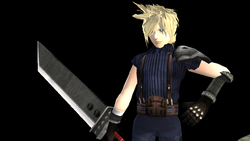
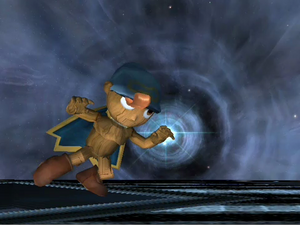
Created by Phantom Wings, moveset hacks (known as Project Smash Attacks) allow one to edit a character's moveset to create their own. Although understanding of scripts and floating values are necessary, it has been described as simple to those who do understand it, and several users on Smash World Forums and various hacking sites have tried to make simple guides for those who don't. Many movesets have been made, although the first one, made by Phantom Wings, known as Phoenix Mario, was the first one to be unveiled at Brawlhacks Wiki under the name Plan Zero. Phoenix Mario, although maybe not the most popular moveset hack, is or was the most widely-used around the time of the release of Project Smash Attacks.
An example of a moveset hack is that of Cloud Strife from the popular Final Fantasy series. His appearance is most well-known on Kitty Corp: Meow Mix, but the model was designed by Akari_Un from a lesser-sized team called Das Donkey. The moveset was added by a hacker named .Fade, and the animations designed mostly by Canon, both of whom are members of the Kitty Corp: Meow Mix team.
Other projects similar to this one have cropped up. Kitty Corp: Meow Mix normally creates hacks that will please mass amounts of people at a time, with large fanbases already in place. BrawlVault, designed by Picano and Jack H. (the current leaders of Kitty Corp: Meow Mix), houses many of these moveset hacks.
If these types of hacks are used in a Wi-Fi match against those who don't have those hacks enabled, the character will appear as normal and will perform their usual attacks, however the match will lag and the players will soon disconnect. If the stage sizes are different, the consequences of certain actions can be different; for example, if the player using the file replacement if playing on a larger stage and goes too far to the side, they may still be grounded according to their screen, but they will have fallen and SD'd according to the other player's screen.
